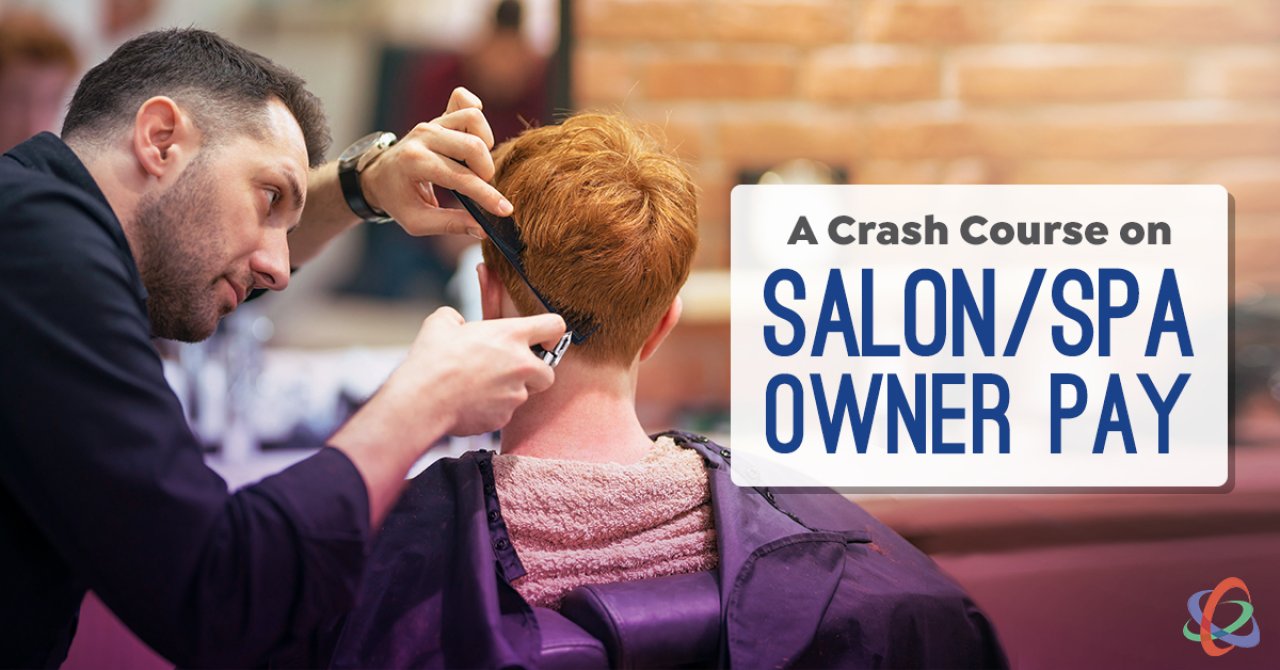A Crash Course on Salon & Spa Owner Pay

As the owner of a salon/spa, managing employee payroll is always a top priority.
But what about how you, the salon/spa owner, should pay yourself?
As an owner, there are many considerations, and many differences of opinion, on how an owner should be paid.
The following questions are just the tip of the iceberg on owner pay:
- How should you get paid and how much?
- If the business is profitable, how much of that should you take?
- What if you’re also a busy service provider?
- What if you’re a full-time leader/manager?
- What if you have a partner(s)?
One thing we know for sure is that owners don’t get to keep all the money that’s left over after service providers are paid.
To bring some clarity to owner’s pay, or to benchmark how you currently pay yourself, I offer you these No-Compromise Leadership strategies:
- The sacrificial paycheck: The stark reality of being the business owner is that when cash flow is tight, owner’s must sacrifice their paychecks so employees can get theirs. In these stressful times, some owners continue to take paychecks but not cash them. The problem with this approach is that withholding tax on those paychecks still needs to be paid on time. The other problem, depending on the length and severity of the cash crisis, is that all, or some, of those uncashed paychecks may never be cashable. KEY: The best strategy, and unfortunately the most painful, is to not take a paycheck until cash flow recovers. And the only way cash flow recovers is to drive revenue and lock down spending with a cash-flow budget.
- 10% of Total Income: This is a very subjective benchmark for owner’s pay. First, it is based on an owner whose full-time responsibility is the leadership of the company, not generating revenue servicing clients. Second, it is based on the fiscal and budgetary expense management of the company. Simply put, the 10% is in no way an “owner’s commission rate” on total company income. Quite the contrary. It is a salary that is budgeted into the company’s monthly and annual cash-flow projection. KEY: The 10% is only sustainable if monthly sales projections are met and expenses are strictly managed. So, if an owner wants to make a $100,000 annual salary, without servicing clients, the salon/spa must be doing at least $1 million in total revenue.
- Service provider owners: This is where the differences of opinion are varied and wide. When most service provider owners open their salon/spa, they need to be revenue producers. As the company grows, the challenge then becomes balancing their passion for the work and revenue generating with leadership responsibilities. When an owner bases their compensation on a commission rate on revenue their hands generate, they can easily fall into the “bought yourself a job” scenario. My recommendation is for service provider owners to budget themselves a salary that is allocated based on time devoted to leadership/administration responsibilities and time servicing clients. Leadership/administration pay goes under “Officer’s Salary” and service time goes under “Cost of Sales” in Service Payroll. Owners pay based on time allocated to work responsibilities rather than “commission” just makes sense and reduces the chance that leadership responsibilities get shortchanged for the sake of revenue. KEY THOUGHT: If you or your company needs the revenue your hands generate to survive, you have a major problem. You’re stuck. Your company is free floating.
- Profit, cash reserves and distributions: Profit is often described as the owner’s “second paycheck.” Yeah, wouldn’t that be nice. But that thinking is an invitation to a cash crisis. Why? Because profit isn’t cash. (Read this blog post learn why.) Cash reserves equal to three to four months operating expenses is not only prudent, it’s smart business planning. KEY: When all the bills are paid, debt principle is current and asset purchases are planned and managed — and cash reserves are sufficient — you can take an owner’s distribution. How much depends on the factors I just stated. And yes, distributions are taxable income. The only exception is at year end when corporate tax returns are completed, taxes have been paid on profit, and disbursable cash after taxes is available. Your accountant should be able to provide that amount.
- Owner bonuses: If, under your leadership, your company is growing, hitting goals and creating profit, you can take a bonus. It can be quarterly, year-end, or based on hitting certain growth targets. KEY: Bonus amounts must be manageable, budgeted and never compromise prudent cash reserves.
- Corporate partnerships: I put the word “corporate” in there because every business entity should be incorporated. Corporate entities (LLC, Sub S or C-Corp), often referred to as the “corporate shield,” legally separate personal assets from the company. When it comes to partnerships, clarity and fairness must prevail. Again, I don’t like that service provider owners work on commission. KEY: Partners should receive a salary based on clearly defined responsibilities because the moment one partner perceives that he or she is carrying more of the load, the partnership will sour. Distributions are made based on the percentage of stock ownership and in accordance with the criteria stated in the previous bullet on distributions.
- Zero profit strategies are dumb: I have to throw this one in here because it is, like I said, dumb. There are accountants that recommend driving profit to zero, or a loss, to avoid income tax. True, part of an accountant’s job is to recommend strategies that minimize income tax. But driving profit to zero or negative is foolish and compromises the financial integrity of the company. KEY: You can’t build cash reserves without creating profit. You can’t create a financially sustainable company with zero profit. You can’t finance growth with financials and tax returns that show a history of zero profit and losses. If your accountant recommends “zero profit” — get a new accountant.
Here’s my challenge to you: When it comes to how you get paid, think about the bigger picture of business ownership and growth.
Your role as owner must evolve as your company grows. The last thing you want to find yourself stuck in is a service provider job in your own company.
There’s a reason you hire employees and provide them with career growth opportunities. It’s to help you, and them, grow a company that takes care of everyone. And to grow a company that you and your team are proud of.


Comments
No comments found. Start the conversation!
Leave a Comment